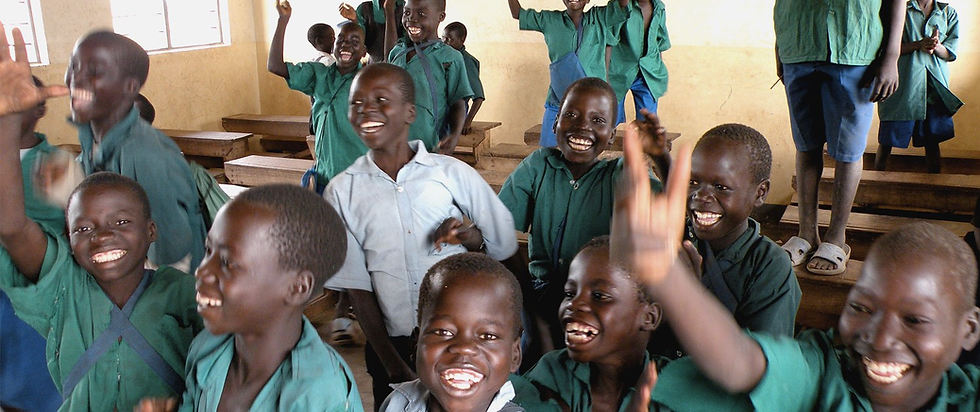The Importance of Health and Education in Low-Income Countries
- Zaha Kırmızıtoprak
- Jan 27, 2023
- 3 min read

Low-income countries, also known as LEDC's, often face a number of challenges in terms of population growth, economic development, and access to resources. These countries are characterized by low GDP per capita, high rates of poverty, and a dependence on primary industries. However, as Hans Rosling's research has shown, these stereotypes are being broken as time passes, and many LEDC's are making progress in improving healthcare and education. In this article, we will explore the link between health, education, and economic development in LEDC's, using case studies from Mozambique and Bangladesh.
Historically, many LEDC's were colonized and enslaved by more economically developed countries (MEDC's), which has hindered their economic development. The lack of resources and limited access to technology in these countries has left them a few steps behind other nations in terms of innovation and progress.
Additionally, many less developed countries are located in extremely dry and tropical regions, which presents a challenge in developing a strong agricultural base. With global warming creating extreme changes in weather patterns, this only adds to the list of challenges that the local population faces.
Furthermore, limited access to education and healthcare leads to high fertility rates per woman. While they are 2.1 in developed countries, they are 4.1 in LEDC's. Health and education are both crucial factors in achieving a higher economic status. A healthy population can lead a productive lifestyle and participate in work to increase economic growth. Educated people can acquire the skills that are necessary for a good work environment and can use the knowledge gained to work in advanced professions such as medicine and technology. These jobs lead to higher incomes and increased economic growth.
Mozambique is one of the poorest countries in the world but has made exceptional progress in the improvement of healthcare and education. After the colonial war, when they gained their independence from Portugal, Hans Rosling worked there as one of two doctors for 300,000 people over 30 years ago. The community couldn't read or write which made them unfit to be able to work and help in the health sector. However, today Mozambique is still very poor but they have invested in infrastructures like bigger hospitals and schools. With more Mozambican staff members, the people are well-trained and more prepared for the diseases faced in the region. Many women each day are saved by cesarians, which was unattainable in the past. The improvement of health led to a healthy and strong population that are eager to learn and work in job sectors that would only be a far dream for their ancestors.
Another strong example of a LEDC country working on its health and education is Bangladesh. Bangladesh is a lesser economically developed country that has seen a tripling of its population since 1950, from 50 million to 150 million. It is also one of the most densely populated countries in the world. The main reason for this population growth is the size of families. Despite this, there are signs of progress in Bangladesh as the country works towards a better life for all citizens.
In 1972, the average number of babies per woman in Bangladesh was 7. However, high birth rates were accompanied by a concerning issue of high baby mortality rates, with 1 in 5 babies tragically passing before the age of 5. Today, with education spreading and the discovery of new vaccines and treatments for infectious diseases, the situation has improved. 98% of children in Bangladesh now attend primary school, and residents work for the government's family planning service to encourage smaller families and provide contraceptives and medication to those in need.
As a source from the University of Sydney argues, when women are not educated, they are unable to attain good jobs and often get married early, leading to abusive relationships. However, when women are educated, they have more opportunities and can provide a better future for themselves and their families. The statistical data also supports this, with a decrease in babies per woman leading to an increase in life expectancy. In 1972, the babies per woman in Bangladesh was 7 and the life span was 50 years old. Today, the babies per woman is at 2.2 and the life span is 70.
In conclusion, for lesser economically developed countries like Bangladesh to move forward, it is crucial to focus on the health and education sectors.
By addressing health issues such as maternal and child health, infectious diseases, and malnutrition, these countries can improve the well-being of their citizens and create a healthier and more productive workforce. Additionally, by increasing access to education and improving the quality of education, these countries can equip their citizens with the skills and knowledge necessary to participate in the economy and drive innovation. With these efforts, Bangladesh and other lesser economically developed countries can work towards a more healthy and educated population, which is key for sustainable economic growth in the short and long term future.






Comments